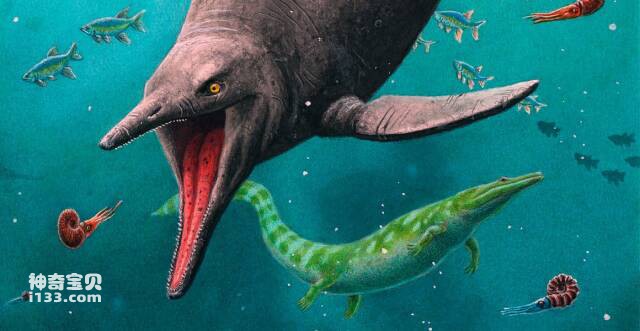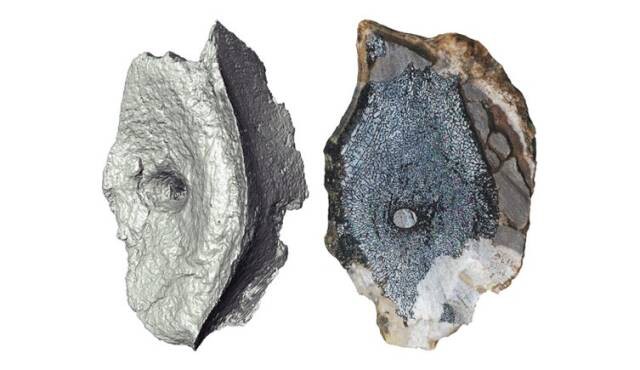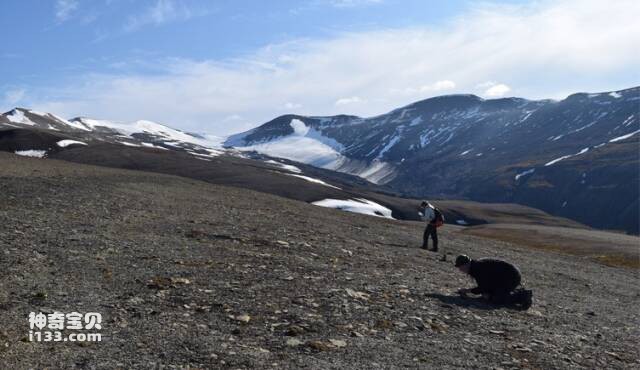The remains of an ichthyosaur discovered in Svalbard offer new insights into the evolution of ancient marine reptiles. New research suggests that ichthyosaurs may have predated the dinosaurs after experiencing the largest mass extinction event on Earth.

The earliest ichthyosaur fossil was found on the island of Spitsbergen in the Svalbard Archipelago, about 250 million years ago.
The ichthyosaur is an extinct marine reptile that once swam in all major oceans. They are thought to have evolved in the early Triassic period and then dominated the oceans throughout the age of dinosaurs.
However, the discovery of the earliest known ichthyosaur fossil could rewrite the evolutionary history of these marine reptiles.
A new study published in Current Biology suggests that ichthyosaurs evolved much earlier than previously thought, possibly even during the Permian-Triassic period, which caused the extinction of about 90% of species It existed before the mass extinction event.
Dr. Aubrey Roberts, associate scientist at the museum and co-author of the study, said: "According to textbooks, ichthyosaurs evolved millions of years after the largest mass extinction event on our planet 252 million years ago. Came here."
"However, our latest findings suggest that may not be the case."
"Our research shows that these fossils are 250 million years old and are the remains of a fully developed marine ichthyosaur, only two million years before the mass extinction event."
"To paleontologists, this is a short period of time, indicating that ichthyosaurs likely evolved before the mass extinction event."

A cross-section showing the internal skeletal structure of the earliest ichthyosaur vertebrae.
How did ichthyosaurs evolve?
Ichthyosaurs were a group of marine reptiles that roamed the oceans for at least 160 million years. Their fossils date back to the early Triassic to late Cretaceous periods, about 90 million years ago.
Marine reptiles were not dinosaurs but part of a separate group of marine vertebrates that resembled modern dolphins and whales in appearance, with streamlined bodies and powerful swimming tails.
They adapted to become one of the ocean's top predators, possessing many sharp teeth perfect for catching fish and squid. While some species are less than a meter long, others can reach a staggering 25 meters in length, comparable to some modern whales.
Ichthyosaur fossils are among the earliest discovered in Britain, with Mary Anning and her brother Joseph discovering the first specimen in the early 1800s. In 2021, the largest ichthyosaur fossil ever found in the UK was discovered in Rutland Water during routine maintenance work.
Research suggests that reptiles evolved from a land-living ancestor to a fully marine lifestyle, similar to how dolphins and other marine mammals evolved from land mammals, but no one is entirely sure what this ancestor would have looked like.
Although many well-preserved ichthyosaur fossils have been found in Western Europe and North America, gaps in the fossil record make the evolutionary history of this group of animals uncertain.
A landscape photo of two people searching for fossils in the foreground and the Spitsbergen Mountains in the background

Team leader Professor Jørn Hurum (left) and team member Øyvind Enger (right) search for fossils in the Valley of Flowers.
How was this early ichthyosaur discovered?
In 2014, paleontologists began an expedition to the Arctic to collect fossils from the Valley of Flowers west of Spitsbergen.
Melting snow from the surrounding mountains formed fast-flowing rivers, exposing rocks that were once silt on the seafloor 250 million years ago. Sediment would have been deposited around the decaying animal remains on the ancient seabed, preserving them in spectacular three-dimensional detail.
The rock samples from Spitsbergen were then taken to the Natural History Museum at the University of Oslo for examination. Among the fossils of bony fish and crocodile-like amphibians are the remains of an ichthyosaur's 11-section articulated tail vertebrae.
Geochemical tests on surrounding rocks confirmed the age of the fossils to approximately 2 million years after the end-Permian mass extinction.
So the researchers initially thought the rocks were too old for an ichthyosaur and instead thought the bones might belong to an early ancestor. However, analysis showed that these vertebrae were identical to those of younger, larger ichthyosaurs.
The preserved internal skeletal microstructure also suggests that the ichthyosaur had an accelerated metabolism and lived a completely marine lifestyle.
While no earlier ichthyosaur fossils have yet been found, given the estimated timescale of marine reptile evolution, the researchers believe the discovery pushes the origin and early diversification of ichthyosaurs back to the Permian-Triassic Before mass extinction.
If ichthyosaurs radiated into marine environments before the extinction event, this would rewrite the common view of the Age of Dinosaurs, when major reptilian lineages emerged.
"The next step is for paleontologists to look for transitional fossils," Aubrey explained.
'In other words, the ancestors of semi-aquatic ichthyosaurs were found in rocks before the Permian-Triassic mass extinction. The challenge, however, is finding fossil rocks from the right environment that might preserve them.
animal tags:
We created this article in conjunction with AI technology, then made sure it was fact-checked and edited by a Animals Top editor.